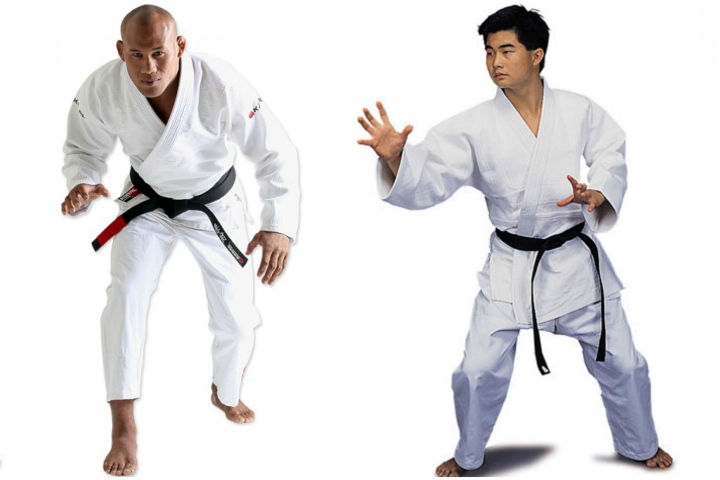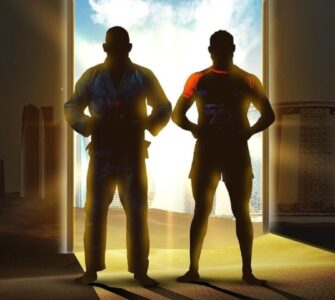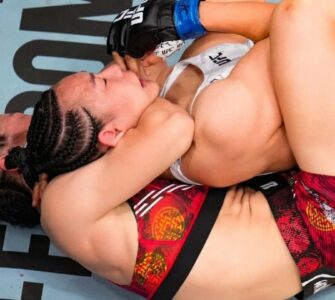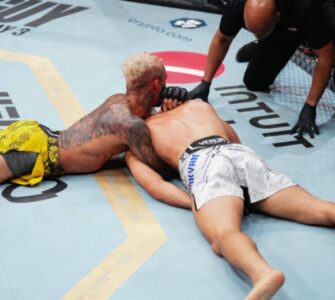One of the most common questions I get as a Jiu-Jitsu instructor is, “How is Jiu-Jitsu different from Karate/ Tae Kwon Do/ Kickboxing etc…?” Because I get the question so often, I’ve given the topic a lot of thought and come up with my view of the three things that sets Gracie Jiu-Jitsu apart from most other martial arts.
1. Content Depth:
Nearly every martial art out there contains striking techniques, grappling/throwing techniques, and weapon defense techniques. This is true of many Karate systems, Tae Kwon Do, AND Gracie Jiu-Jitsu.
The difference is how much emphasis is put into each type of technique. Some arts will put most of their training time into striking, others into weapons training. In Gracie Jiu-Jitsu, the bulk of our time is spent in defending strikes or weapons using throwing and grappling techniques. In addition, we spend a lot of time training the fine details of grappling techniques that make it possible for a small person to control or subdue a much larger opponent.
The founders of Gracie Jiu-Jitsu, Carlos and Helio Gracie, were not large men. They had to develop a method of using jiu-jitsu in a way that used leverage to overcome strength and aggression.
Today, that method has blossomed into a proven self-defense art as well as a fun and exciting sport!
2. Application:
The second difference between most martial arts and Gracie Jiu-Jitsu is in the application of the art and it’s techniques. Many martial arts will have you practice kicking and punching as your main mode of defense with grappling being executed only if the opponent grabs you. This is because they believe in a “one strike victory” mentality. That is, they often feel that practicing striking will make you so good that you will be able to knock out people with just a few quick/powerful attacks.
While practices kicking and punching, these techniques are often used just as a quick distraction to get inside the opponent’s striking distance and throw them to the ground or begin applying chokes or joint locks. This is because we understand, through practice and actual application, that one strike knockouts are very rare and counting on them is a poor habit. Grappling, however, is almost impossible to avoid in a defensive encounter. Whether it’s a fight between two people, or an aggressive assault of some sort, grappling is almost always part of the action. By understanding grappling, you can avoid getting hit hard and defeat even the most aggressive opponents.
3. Training:
Probably the most profound difference between Gracie Jiu-Jitsu and other martial arts is the training methods employed. When training most other martial arts, you will spend a lot of time drilling alone. Kicking and punching the air while moving from one side of the floor to the other. You’ll spend a lot of time doing forms, kicking and punching the air in a pre-set pattern. These things, while great for learning balance and developing some endurance, really don’t teach you anything about how to actually use the techniques. Even one step sparring does very little of this. Moreover, it’s largely a waste of time. Why go to a school and spend most of your time practicing things you can be taught once or twice and then practice during your own time?
When these other arts practice sparring it’s often with little or no contact. This means they really have no idea what will happen when they make contact with an opponent during a defensive situation. Watching Boxing, MMA, Kickboxing, and Muay Thai on TV should tell you that most people can take a lot of abuse and don’t get knocked out in one or two punches. Often times, these matches go on for 10 or 15 minutes and neither person is ever knocked out. So we don’t really think striking is a great option.
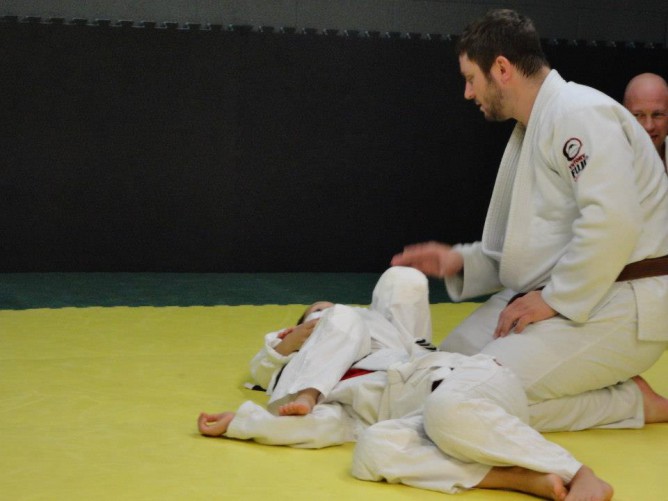
A BJJ instructor guides two young students through a technique
In Jiu-Jitsu, however, the training is nearly always with a partner. This will help to make sure your time in training is optimized. You spend your time developing the timing and reflexes to actually make the techniques you learn work in a realistic situation. You’re training against another opponent who is trying to stop you from doing your moves.
The obvious benefit of this training method is that every participant knows for a fact that their moves will work for them when the time comes.
In the end, it’s the depth of content, application of techniques and method of training that sets Jiu-Jitsu head and shoulders above other arts in terms of a consistent outcome. Certainly, a good head kick or punch can knock out an opponent. But most often, this is not the case. It would be like using a gun that sometimes shoots and sometimes does not. This just doesn’t make sense. Jiu-Jitsu, more than any other martial art, will deliver (and has delivered) consistent results time and time again. And that’s what sets it apart from other martial arts.
Guest post by Bill Jones, BJJ black belt under Pedro Sauer, owner and head instructor at Top Level Martial Arts in Cuyahoga Falls, Ohio. If you would like to learn more about Bill or Top Level Martial Arts, visit http://toplevelmartialarts.com

